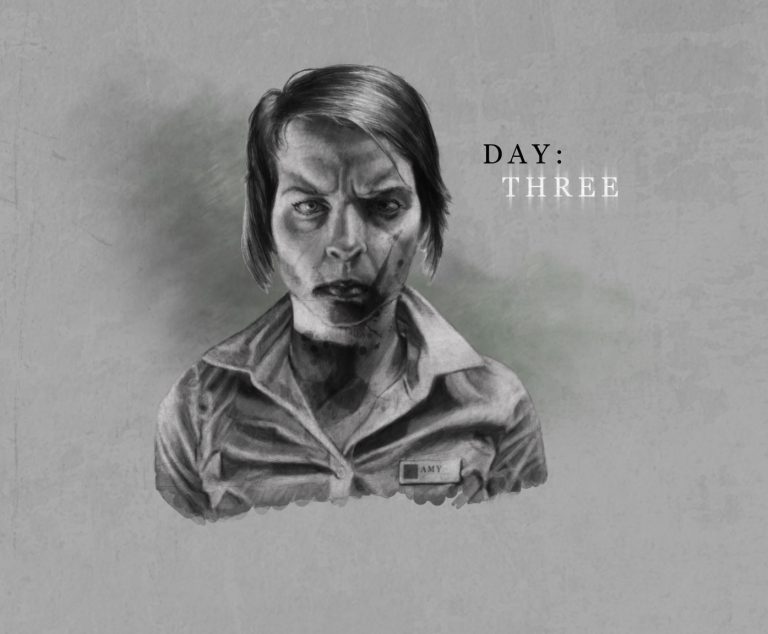Amy Steadman (part ii)
For Amy Steadman, death is just the beginning. Follow her disintegration day-by-day.
From career-minded, twenty-four year old graduate with a promising future ahead of her to a “mud-splattered, half-naked, emaciated collection of brittle bone and rotting flesh” in little more than three weeks…
Almost fifty hours have passed since infection. Amy Steadman has been dead for just over two days.

Minutes after death, Amy’s body began to decompose. A process known as autolysis has begun. This is self-digestion. Starved of oxygen, complex chemical reactions have started to occur throughout the corpse. Amy’s cells have become poisoned by increased levels of carbon dioxide, changes in acidity levels and the accumulation of waste. Her body has begun the slow process of dissolving from the inside out.
There has already been a marked change in Amy’s external appearance. Her skin is now discoloured; her once healthy pink hue having darkened to a dull, dirty grey. Her veins are considerably more prominent than they were and, in places, her skin now has a greasy translucency. Amy died lying on her back, with her body arched across the feet of a metal display unit. The parts of her which are lowest to the ground – her feet, legs and backside and her left arm – now appear swollen and bruised. Blood, no longer pumping, has pooled in these areas and coagulated.
The outward signs of the chemical reactions occurring throughout the corpse are becoming increasingly apparent. Fluid-filled blisters have begun to form on Amy’s skin and, around some areas of her body, skin slippage has also occurred. Her face now appears drawn and hollowed.
To all intents and purposes, Amy Steadman is dead. As a unique and identifiable human being, she has all but ceased to exist. All that remains of her now is a decaying carcase and all traces of the personality and character she once had have disappeared. Her heart no longer beats, she no longer breathes, blood no longer circulates. The infection, however, has not completely destroyed her. Part of Amy’s brain and nervous system has continued to function, albeit at a virtually undetectable level. There are several other corpses nearby in a similar condition. Until now, their function has been slight and unnoticeable. Amy has, however, finally reached the stage where her brain has become able to again exert a degree of basic control. She is only capable of rudimentary yes/no decisions. She no longer feels emotion, nor is she aware of who – what – she now is. She has no desires or needs: she is driven purely by instinct. The brain’s control over the rest of her body is improving, but at a phenomenally slow speed.
Amy’s body is beginning to move. The first outwardly visible sign of change is in her right foot which begins to spasm and twitch at the ankle. Over the next few hours this movement gradually spreads to all four limbs and across the torso until, finally, the body is able to lift itself up and stand. Amy’s movements are clumsy and uncoordinated. Coagulated blood and the gelling of the cytoplasm within individual cells (because of the increased acidity inside the body) is preventing free movement. Her eyes are open but she cannot see. She cannot hear. She cannot feel anything or react to any external stimulation. The combined effects of gravity, physical deterioration and the uneven distribution of weight across her corpse after two days of inactivity causes Amy to move. Initially she trips and falls on unsteady legs, like a new-born. Soon, however, her level of control is such that she is able to distribute her weight enough to manage a rudimentary walk. Devoid of all senses, Amy’s corpse simply keeps moving forward until it reaches an obstruction and can go no further. She then shuffles around until she is able to move freely again.
Amy’s body remains in this state for a further two days.










